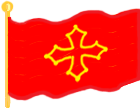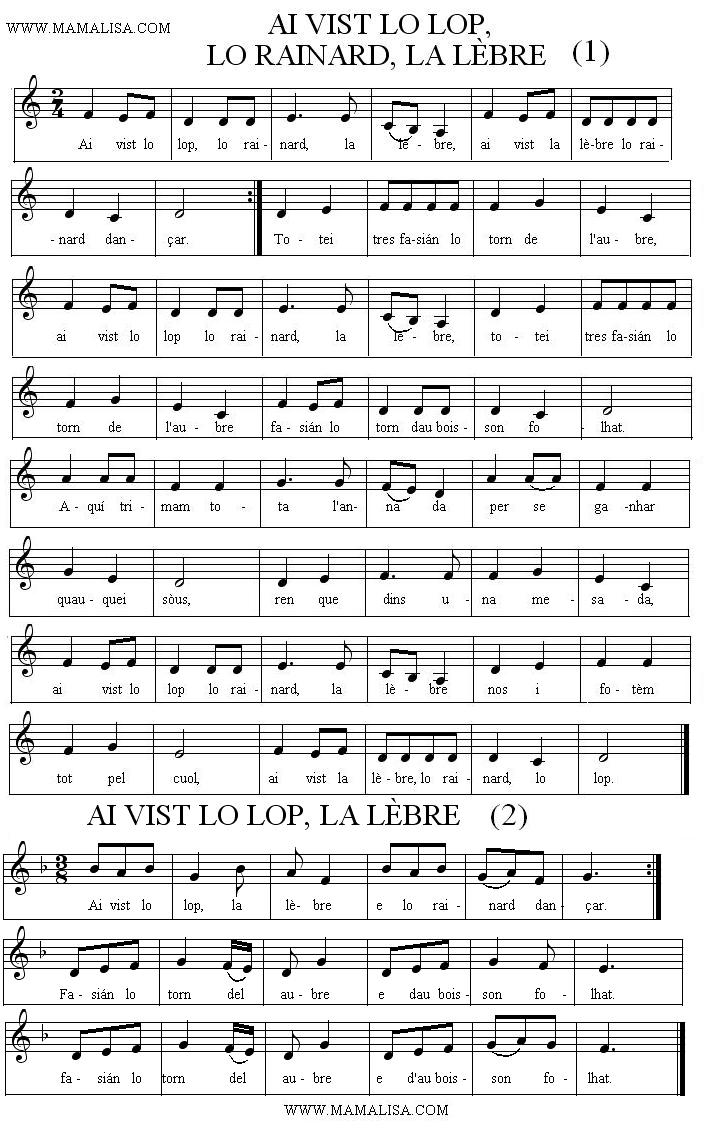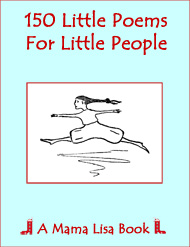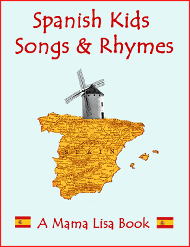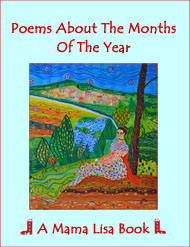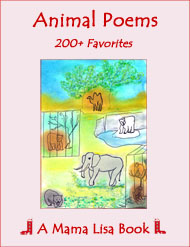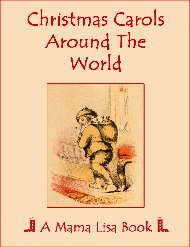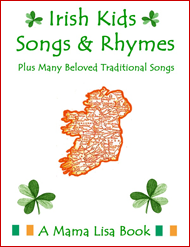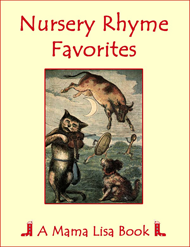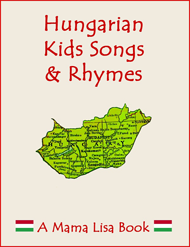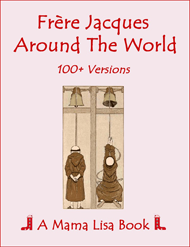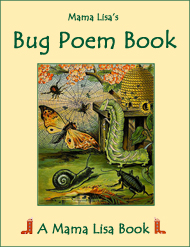Ai vist lo lop, lo rainard, la lèbre
This is an old traditional Occitan song. We've included two versions of it below.
Some sources believe the wolf, the fox and the hare (or weasel) in this song represented the King, Lord and Church, all authorities who collected taxes - leaving nothing for the peasants.…
Ai vist lo lop, lo rainard, la lèbre
I Saw The Wolf, The Fox, The Hare
Traditional Song
Traditional Song
(Occitan)
(English)
Ai vist lo lop, lo rainard, la lèbre
Ai vist lo lop, lo rainard dançar
Totei tres fasián lo torn de l'aubre
Ai vist lo lop, lo rainard, la lèbre
Totei tres fasián lo torn de l'aubre
Fasián lo torn dau boisson folhat.
Aquí trimam tota l'annada
Per se ganhar quauquei sòus
Rèn que dins una mesada
Ai vist lo lop, lo rainal, la lèbre
Nos i fotèm tot pel cuol
Ai vist lo lèbre, lo rainal, lo lop.
I saw the wolf, the fox, the hare,
I saw the wolf, the fox dance.
All three were circling round the tree
I saw the wolf, the fox, the hare,
All three were circling round the tree,
They were circling round the sprouting bush.
Here we slave away all the year round
So we can earn a few coins
And just in a month's time
I saw the wolf, the fox, the hare,
There is nothing left
I saw the hare, the fox, the wolf.
Notes
Alternate Version
Ai vist lo lop, la lèbre e lo rainard dançar (x2)
Fasián lo torn del aubre e del boisson folhat* (x2)
Triman tota l'annada per ganhar quauquei sòus
E dins una mesada, nos fotèm tot pel cuol (x2).
Translation
I saw the wolf, the hare and the fox dance (x2)
They were circling round the tree and the sprouting bush (x2)
We slave away all the year round to earn a few coins
And in a month's time there's nothing left (x2).
*Variant:Fasián lo torn del aubre sens jamai s'atrapar (They were circling round the tree and could never catch one another).
*****
There's a French version of this song called "J'ai vu le loup, le renard et la belette", "I Saw the Wolf, the Fox and the Weasel".

Below you can hear Monique sing two versions of the song. The first tune is a dancing melody from the 14th century Gregorian chant Dies Irae, the second tune is a bourrée from Auvergne. There's a slight pause in between each version…
Many thanks to Monique Palomares for singing this song for us!
Thanks and Acknowledgements
Many thanks to Monique Palomares for contributing and translating this song, the score, the midi and the mp3 music.
Mercé plan!


